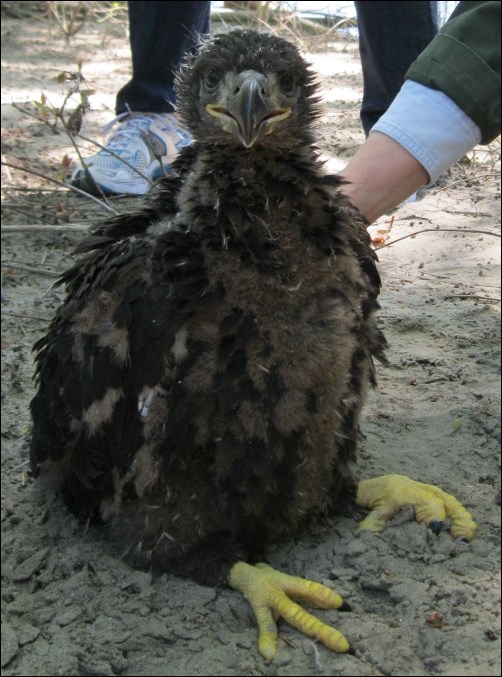
The bald eagle population has made an extraordinary recovery from its low in the 1960s: only 417 pairs of bald eagles existed in the lower 48 states in 1963, but protections offered by the Clean Water Act of 1972, the DDT ban in 1972, and the Endangered Species Act of 1973 helped the eagle population rebound. In 1995, bald eagles were upgraded from endangered to threatened and in 2007 biologists estimated that nearly 9,800 pairs nested in the lower 48 states. Over 1,300 of those pairs live in Minnesota, more than any of the other lower 48 states. In 2006, the National Park Service Great Lakes Inventory and Monitoring Network began a study to measure the concentration of six contaminants (lead, mercury, DDT, PCBs, PFCs, and PBDEs) in three national parks: the Mississippi National River and Recreation Area, the St. Croix National Scenic Riverway, and the Apostle Islands National Lakeshore. Researchers gather blood and feather samples from bald eagle nestlings annually. These contaminants linger in the environment and the organisms that reside there, taking many years to disappear. Because of their persistence, these chemicals are found in ever-increasing amounts as they move up the food chain from prey to predator, a process known as "bioaccumulation." The top predator retains the highest, and potentially most damaging, concentration of the contaminant. Bald eagles dominate the local food chain along rivers and lakes and therefore are among those species at greatest risk. If the concentration of a chemical is high in a nestling, it indicates the chemical is present in both other organisms and in the Mississippi River ecosystem. Findings for the first three years of the survey were compiled to assess where the contaminants are increasing or decreasing. The results became available in June 2009. The bald eagle population in the park and across the state is flourishing despite the presence of these chemicals, which is good news, but the long-term persistence of these contaminants and their effects on eagles and the environment remain unknown. For more information about eagle nest surveys, check out the links below. The requested video is no longer available.
|
Last updated: December 19, 2024
